Leadership Goal
Objective
To deliver low-carbon, resource-efficient and environmentally sensitive places.
Target
To lead environmental performance across Landcom developments by committing to being carbon neutral and water positive, with zero waste and net positive ecological outcomes by 2028.
Relevant Sustainable Development Goals
5 Year Results

Landom has committed that all future communities where Landcom is the master developer will be delivered as all-electric.

100% achievement across our urban heat island reduction, water-sensitive urban design, climate resilience assessments and enabling onsite renewable energy targets.

Progressively maturing our approach to climate change risk, including aligning to the Task Force on Climate-Related Disclosures, and preparing: 18 out of 18 climate resilience assessments and 17 out of 18 climate adaptation and community resilience plans.
Overview
Landcom’s Climate Resilient Places pillar is focused on a leadership goal to ‘enable carbon neutral, water positive, zero waste and net positive ecological outcomes by 2028’.
This leadership goal was developed to reflect Landcom’s contribution towards the Paris Agreement’s2 long term goal of keeping the increase in global average temperature well below 2°C, the United Nations Sustainable Development Goals3, and reducing the impact of shocks and stresses to communities and infrastructure as identified by Resilient Sydney4 (part of the Rockefeller Foundation 100 Resilient Cities Program), such as extreme weather and water crises.
Within this pillar Landcom focuses on environmental sustainability and resilience. It encompasses environmental management and the adoption of independent third-party rating tools and certifications, engaging with our supply chain, supporting communities to reduce their operational costs of living, and developing our projects in a way that reduce impacts on the environment.
Environmentally sustainable communities are balanced in meeting the needs of the natural and urban environments. They take into account the needs of people today, and the needs of our future generations. Landcom believes that the built environment should incorporate green spaces and retain a connection to our natural habitats, for the benefit of the environment, and our communities.
Landcom addresses environmental sustainability through the following focus areas:
- Climate & Resilience
- Energy & Emissions
- Environmental Management
- Waste & Materials
- Water
Each of these focus areas includes a suite of targets to measure our success.
2 What is the Paris Agreement? (2018)
3 For Landcom’s alignment to the Sustainable Development Goals see Appendix D: Sustainable Development Goals Alignment
4 Resilient Sydney, Preliminary Resilience Assessment (2016)






Heat Resilient Communities
An ‘extreme risk’ of extreme heat is common to almost all Landcom sites, which is consistent with the top risks to Sydney identified by Resilient Sydney.
Read more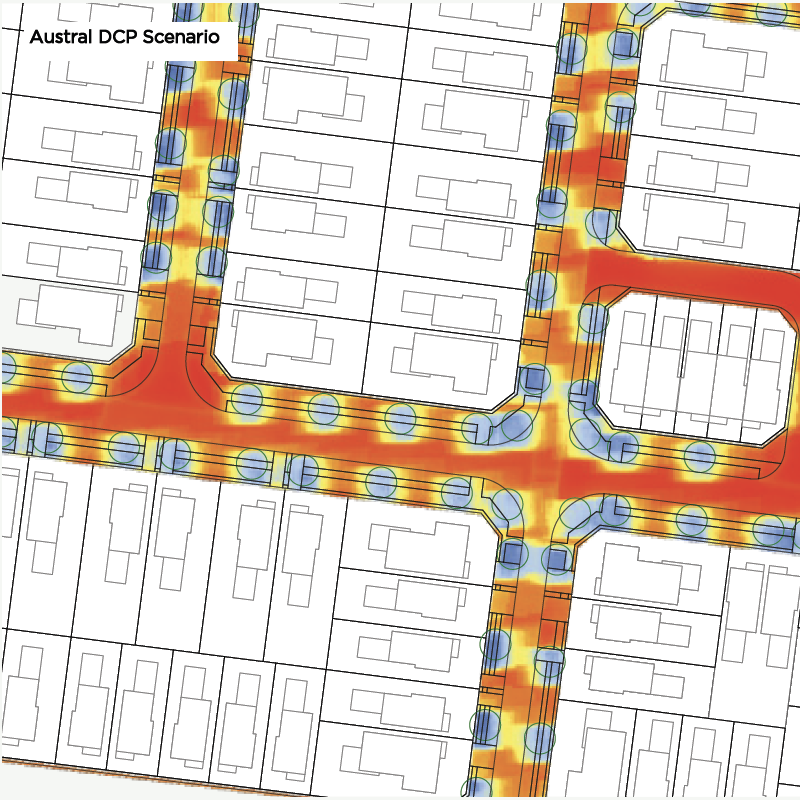
Transition Risk Scenario Analysis
In 2021 Landcom initiated a project to model the potential financial implications of selected climate-related transition risks under different scenarios over the next 20 years.
Read more
Climate Active Journey
In alignment with the Department of Planning and Environment’s Net Zero Plan and broader support across government, Landcom continues to commit and demonstrate action towards enabling carbon neutral outcomes.
Read more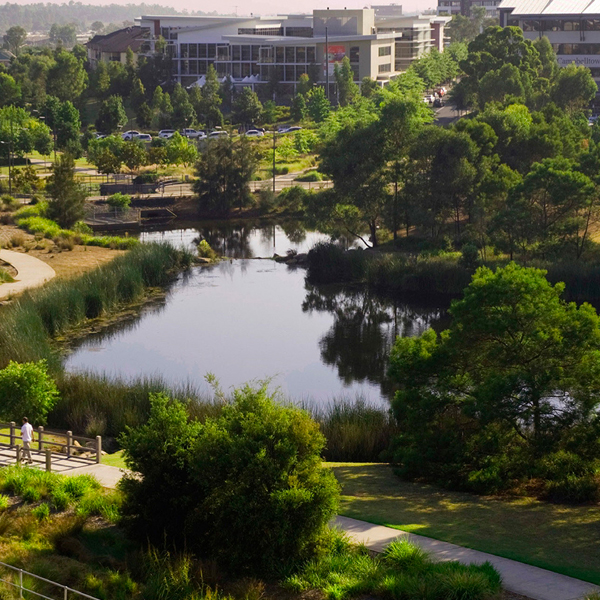
Management Approach
Every Landcom project is unique and requires a bespoke approach to environmental sustainability. We use the sustainability modelling tool PRECINX5 to identify opportunities for performance improvement across our Energy & Emissions and Water targets.
Our approach to Energy & Emissions includes influencing the reduction of greenhouse gas (GHG) emissions (stationary and transport) at a precinct scale across our communities and influencing the onsite production of renewable energy.
We approach Water in a similar way, by looking at the reduction of potable water use across a precinct and identifying opportunities for recycling and reuse. We also set ourselves targets to limit stormwater discharge pollutant loads from our sites. This minimises downstream water quality impacts in the communities we develop. Urban stormwater modelling software such as MUSIC6 is used to measure pollutant loads across our projects.
For our FY22 performance see Energy & Emissions Performance Results, or for Water see Water Performance Results.
_________________________
5 Landcom commissioned the development of PRECINX in 2009 as an accurate predictive modelling tool of greenhouse gas emissions, water consumption, transport outcomes and cost of living impacts of development in the built environment. Landcom now licenses the tool, as do many other developers, utilities, and local and state government organisations.
6 In some instances Landcom may also agree to use other rating tools in lieu of, or in addition to, those outlined. This is at Landcom’s discretion.
Landcom is committed to adopting independent third-party rating tools and certifications or exceeding regulatory requirements. We believe it is important to have independent verification of our sustainability performance and this is reflected in our targets for Environmental Management. Our preferred rating tools are outlined below.

Green Star, administered by the Green Building Council of Australia, is Landcom’s preferred independent and voluntary rating tool for precincts and built form. Landcom is committed to achieving ‘Australian Best Practice, 5 Star Green Star’ project certifications for all new projects. Landcom adopts the National Australian Built Environment Rating System (NABERS)7 as its preferred independent and voluntary rating system to validate the operational sustainability of eligible non-residential built form. NABERS measures a building’s operational energy efficiency, carbon emissions, water consumption and waste production on an annual basis, and awards a star rating out of six.
Landcom is committed to requiring a NABERS rating at new projects that include office, retail or hotel built form. A NABERS rating can only be ensured at Landcom projects through collaboration with future building owners and operators through conditional requirements within contracts of sale to future site owners.
We measure the energy and water efficiency of homes delivered by Landcom in accordance with the Environmental Planning and Assessment Act (1979) Building Sustainability Index (BASIX). BASIX is administered by the Department of Planning and Environment (DPE), applies to residential developments, and aims to deliver equitable, effective water and GHG reductions across NSW.
BASIX targets are calculated as a percentage of savings against the 2005 NSW average benchmarks (being the average per-person water consumption and greenhouse gas emissions levels across the state).
These percentage savings are then expressed as a target, i.e. BASIX 50 represents a 50% saving against the benchmark. BASIX assesses a proposed dwelling based on these benchmarks and takes into account regional variations such as soil type, climate, rainfall and evaporation rates.
BASIX certificates are generated in accordance with the design of a new residential development, based on the specifications of that building. A BASIX certificate must accompany any development application or complying development application before approval for that building is provided. Once construction is complete, a BASIX completion receipt is issued if an independent certifier confirms the home has been built in accordance with the BASIX specifications. Landcom uses the BASIX completion receipt to validate the percentage of homes within our portfolio designed and delivered in accordance with our targets.
For our FY22 activities related to Environmental Management, see Environmental Management Performance Results.
_________________________
7 What is NABERS? (2018) https://www.nabers.gov.au/about/what-nabers
Landcom’s approach to Climate & Resilience includes understanding our physical and transition risks to climate change and its impacts, ensuring our communities are adaptable to change, addressing known risks such as urban heat island8, and maintaining our commitment to enhancing local biodiversity and ecology.
During FY18 Landcom built its internal capacity for assessing asset exposure to physical climate change risks. This included adopting a risk assessment framework, Resilience-In-Design checklist, prompting project teams to consider common climate risks during the early phases of a project’s design, and completing community resilience plans9 designed to enhance the resilience of our communities in the way they live day to day. As part of this work, we identified that leveraging our existing risk management process was the most appropriate and effective way of embedding and responding to climate-related risks and opportunities. Further details on our Risk Management approach are presented in our Annual Report.
In FY19 we expanded our remit and sought to better understand the physical and transition risks to the business and projects of climate change. A gap analysis aligned with the TCFD Recommendations and 2019 GRESB Resilience Module was undertaken to determine Landcom’s current level of preparedness for the transition risks of climate change, and how Landcom currently addresses physical risks at its assets. This included business-wide stakeholder engagement and a review of Landcom’s systems and processes. The results found that Landcom is comprehensively addressing the physical risks to assets, and there is opportunity to enhance our preparedness to transition risks. To ensure that physical risks continued to be managed appropriately and that transition risks were better considered, we prepared a Climate Risk Management Plan to guide our response, with key risks and actions sitting within our Strategic and Operational risk registers and plans.
In FY20 Landcom commenced reporting against the TCFD, to in part fulfil the obligation for our Directors to give due consideration to climate-related transition risks and for our organisation to disclose those risks. This also included adding a bespoke Climate & Sustainability category within our Risk Appetite Statement, providing focus areas around physical risks and climate resilience. In FY21 with support from our Executive Committee, we initiated a project to identify and model the potential financial implications of selected climate-related risks under different scenarios.
In FY22 we completed the initial modelling of these selected risks, with a business plan prepared to identify opportunities for Landcom to improve our existing approach to physical and social climate resilience and with the view of incorporating transition risks across our portfolio going forward (see Case Study: Transition Risk Scenario Analysis).
We already have a comprehensive process to identify and address physical risks that impact our projects, for example reducing the effects of urban heat island across our new communities. As one of Sydney’s most significant climate-related risks, early design interventions that address urban heat reduction are essential in the creation of new communities. We will leverage this comprehensive process to incorporate consideration of transition risks at the project level as the way we design our communities will support the transition to a low carbon economy.
Finally, Landcom seeks to address resilience in the natural environment. This is achieved when we maintain strong diversity of our ecological systems. Our 2028 leadership goal seeks to enable net positive ecological outcomes at the completion of our projects, and this is of particular importance with upcoming global frameworks such as the Task Force on Nature-related Financial Disclosures and the Science Based Targets for Nature, as well as the need to pursue more nature-based solutions to support biodiversity enhancement and climate resilience.
We abide by legislative requirements including the Commonwealth Environmental Protection and Biodiversity Conservation Act 1999 (EPBC) and NSW Biodiversity Conservation Act (2016) when addressing areas of biodiversity. When we purchase biodiversity offsets for our development approvals, we use the NSW State Government BioBanking Scheme which commits land owners to enhancing and protecting the biodiversity values of their land. We use our Biodiversity Calculator to measure the quality and quantity of ecological communities beyond any legislative requirements, pre- and post-development, and continuously look for ways to reduce the impact of our activities on biodiversity, while also acknowledging that land development and retention of biodiversity are sometimes at odds.
For our FY22 performance against our Climate & Resilience targets, see Climate & Resilience Performance Results.
_________________________
9 Eligible assets include those that have been assessed for climate change risks
Landcom’s environmental leadership goal for 2028 includes enabling zero waste communities. To do this we are advocating for responsible use of resources, and diversion from landfill.
While we are focused on reducing waste within our own offices it is construction waste that is material to Landcom’s operations. As part of our ongoing commitment to reduce waste and increase responsible materials use, Landcom continues to engage with our site superintendents and principal contractors to reduce, reuse or divert waste from landfill.
We also include the responsible sourcing of timber for all construction works within our approach. This increases engagement with our supply chain, and supports work underway within our Accountable & Collaborative Places pillar.
For our FY22 performance results against our Waste & Materials targets, see Waste & Materials Performance Results.
Our Sustainable Places Strategy identifies a number of initiatives as future opportunities to enhance our Environmental Management, Climate & Resilience, and Waste & Materials focus areas. These include:
- understanding Landcom’s role in regenerating or restoring biodiversity and local watersheds within our communities
- determining the value of adopting a Landcom materials Red List10
- establishing how life cycle assessments may improve our supply chain and reduce embodied carbon and waste at our projects.
In FY22 we progressed investigations into how Landcom can better deliver against our leadership goal within the areas we operate using the above opportunities, including actions and targets. As we understand the actions needed to deliver on our leadership goal, when we finalise our revised targets and pilot the actions, we will update our Sustainable Places Strategy to reflect these changes and progress.
_________________________
10 About the LBC Red List: https://living-future.org/lbc/red-list/
Performance Results
See below our performance results for each of the reporting areas within our Climate Resilient Places Pillar.
Climate & Resilience
Targets
Performance
All new projects to undertake a Climate Resilience Assessment
Performance
Cumulative in-scope project completion rate
Targets
All new projects prepare and implement an effective Climate Adaptation and Community Resilience Plan
Performance
Cumulative in-scope project completion rate
Targets
All new projects enhance the local habitat, biodiversity or ecological communities, compared to the site conditions pre-acquisition or pre-master plan (Landcom Biodiversity Calculator)
Performance
FY21 performance:
FY22 performance:
5-year performance:
Targets
Total project site area in plan view comprised of building or landscape elements that reduce the impact of urban heat island effect
Greenfield Projects: 50% project site area
Renewal or High Density Projects: 20-50% project site area (calculation in accordance with Green Star Communities)
Performance
FY21 performance:
FY22 performance:
5-year performance:
An average ofPerformance Overviews
In FY22 we matured our approach to organisational transition risks, which is beyond the current scope of Landcom’s targets but intersects directly with the resilience of our communities. Landcom strives to be an industry leader in responding to and disclosing climate risks, currently disclosing substantial information that relates to each of the 11 TCFD Recommended Disclosures. Further detail on these efforts can be seen in Appendix B: Task Force on Climate-related Financial Disclosures
This built on our ongoing efforts to enhance our current project portfolio’s resilience to physical climate-related risks and increases our internal capacity to ensure all future projects are resilient.
We use a consistent pro forma to assess Landcom projects, which was developed in 2018 in line with the Intergovernmental Panel on Climate Change’s Fifth Assessment Report (IPCC AR5) climate projections for 2030 and 209011. We also use our Resilience-in-Design checklist to guide informed decision-making for projects during the concept design of a development.
All our new in-scope projects since the launch of the Sustainable Places Strategy, and all relevant legacy projects, now have climate resilience assessments in alignment with the IPCC AR5 Representative Concentration Pathways 4.5 and 8.5 climate projections, and adaptation plans developed to reduce the physical and social risks of climate change to the project and community.
‘Extreme risk’ of extreme heat is common to almost all Landcom sites, which is consistent with the top risks to Sydney identified by Resilient Sydney12. This finding confirms the importance of Landcom’s priority to reduce or mitigate the effects of urban heat island and build community resilience to heat at all new projects. Bushfire is also a consistent ‘high risk’ across Landcom’s project portfolio, while sites across our portfolio are starting to also see increased ‘high risk’ due to extreme rainfall and flooding. We anticipate these physical risks and their influence on social outcomes will continue to increase in intensity and frequency into the future.
_________________________
11 What is the IPPCC AR5 Assessment Report?
Heat continues to be a major stress for many cities across Australia, as confirmed by our climate change risk assessments. Landcom’s commitment to reduce urban heat island (UHI) effect will contribute to reduced risk of extreme heat at our projects. This will enhance the resilience of our communities and the residents who live there.
In FY22 Austral, Queenscliff, North Wilton and the Sydney Metro North West (SMNW) Precinct Places of Kellyville, Bella Vista and Norwest are in scope for our UHI Reduction target. Austral focuses on reducing urban heat through innovative street design, providing a wider verge for increased tree planting and rain gardens, while driving the application of light-coloured roof and surface materials (see Case Study: Heat Resilient Communities). This focus shows a reduction in ambient temperature of 6°C across parts of the project site. Queenscliff focuses on retention of existing mature canopy trees to achieve this target, while North Wilton, Kellyville, Bella Vista and Norwest have all committed to the target through their Green Star ratings.
FY22 is the fifth year Landcom will report the contribution we make to biodiversity and ecological systems. To support the business in measuring this, in 2018 we developed our Biodiversity Calculator based on the Green Building Council of Australia’s change in ecological value calculator provided in Green Star tools.
Landcom’s Biodiversity Calculator is designed to measure the change in quality and quantity of biodiversity at a given project site, from pre- development to post development. The calculator goes beyond just assessing high-value and significant biodiversity (which legislation requires to be conserved) and factors a broader spectrum of biodiversity value into the assessment. Depending on the level of quality and quantity change, the calculator determines whether a net positive or net negative impact has been achieved. It is possible to have a net positive outcome in biodiversity, despite a reduction in physical area, if the quality of that area has been significantly improved.
In FY22 we expanded the use of our biodiversity calculator to address key biodiversity metrics under the Global Reporting Initiative such as consideration of International Union for Conservation of Nature (IUCN) ‘Red List’ species, areas of high value biodiversity, habitats protected or restored and significant impacts of our activities on biodiversity.
The scale provided by the biodiversity calculator is as follows:
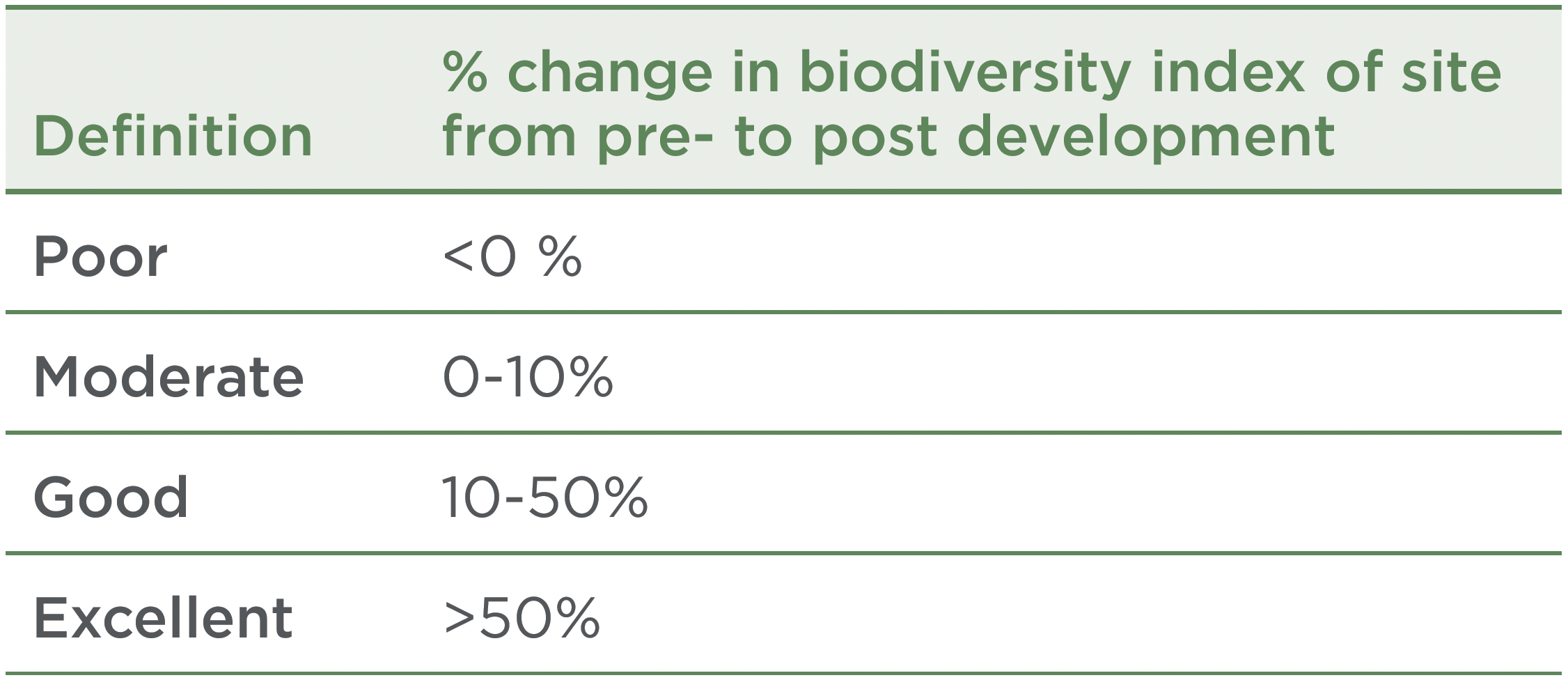
Projects in scope for FY22 included the Bella Vista and Kellyville precincts within the SMNW Places program, Macarthur Gardens North, Edmondson Park, Austral and Fennell Bay, of which 50% are currently making a net positive biodiversity contribution. Of particular note, our communities at Austral and Edmondson Park resulted in a net negative change in our biodiversity index of 1% and 4%, respectively. As these two communities are still undergoing design, approval and delivery, opportunities will be investigated to improve biodiversity and look to return a positive change. Detailed planning for biodiversity is still underway for North Wilton and is therefore deemed out of scope for this year’s biodiversity reporting. We will continue to report on these communities to reflect changes over time.
Overall, a total of 249.41ha will be protected and restored by National Parks, local councils or other entities aligned with legislative guidelines. This supports improved outcomes considering that two of our projects have Commonwealth-listed protected species or habitat, while the other four projects have NSW-listed protected species or habitat and this protection will afford the opportunity for these species to thrive.
All of the six projects have protected, or restored areas present within their development boundary, including five with a Vegetation Management Plan and one with a Stewardship Site Agreement. Fennell Bay, in particular, is forecast to contribute a very good (net positive) change in biodiversity value, due to the project delivering 62ha of native habitat offsets.
All six of the projects however will result in the removal of native vegetation, while four will result in the removal of species habitat. While three of the projects will have irreversible impacts to threatened species, with increased native landscaping and plantings we can return a positive outcome and reduce our overall impact. Indirect risks such as transport of weeds and/or pathogens, sedimentation and contamination, as well as trampling of non-threatened flora species are possible during development of our communities, however we effectively manage this risk through the preparation of robust Environmental Management Plans. As part of our Future Priorities, Landcom is investigating methods of restoration or regeneration onsite to further reduce the potential impacts on species, vegetation and habitat and contribute towards our goal of all projects achieving a net positive ecological outcome. IUCN Red List and national conservation list species within habitat affected by our operations are listed in the following table.
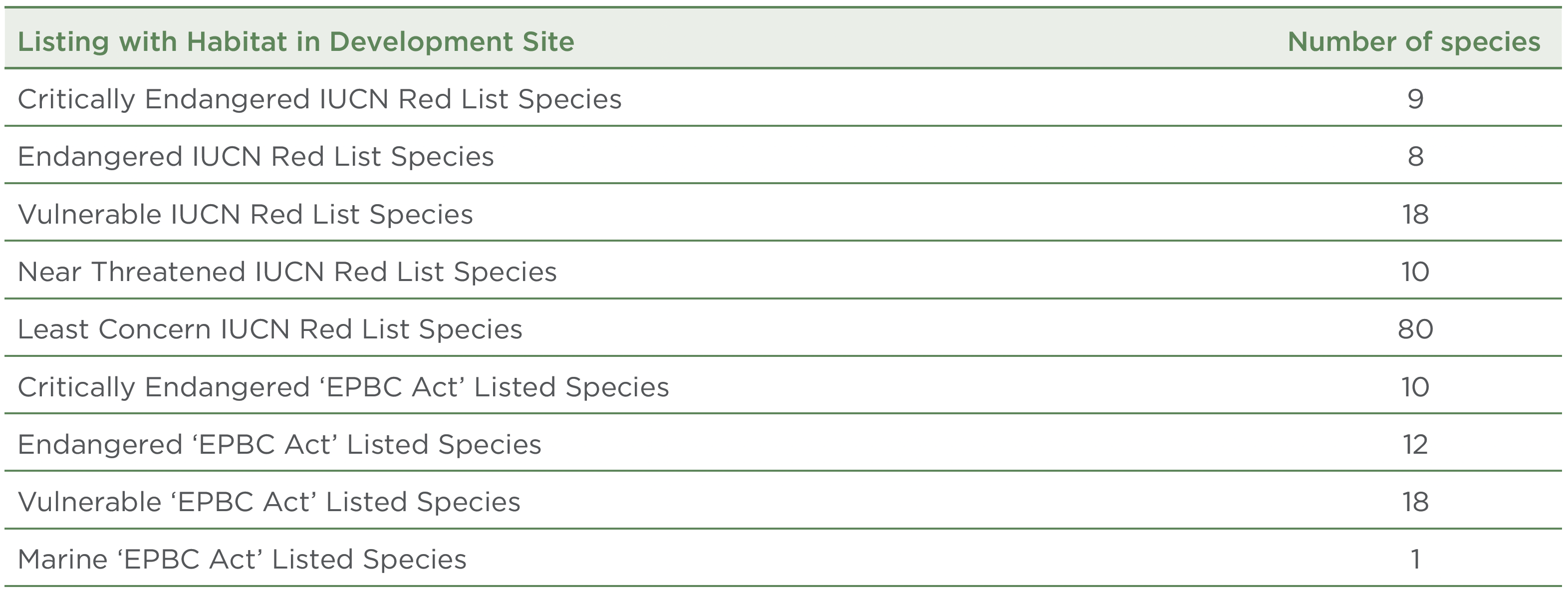
Macarthur Gardens North will reduce the overall area of onsite biodiversity from pre-development to post-development, but will return a net positive outcome due to additional water bodies and plantings, as well as native habitat creation on site. Off site native habitat offsets will also be employed at Macarthur Gardens North to manage the reduction in habitat area.
The remaining sites assessed form part of the SMNW Places program. Each site is co-located with a metro station being delivered by Transport for NSW (TFNSW). TFNSW is also the landowner of these projects, and Landcom has been appointed as the master developer for the surrounding communities. The SMNW sites of Kellyville and Bella Vista will reduce the overall onsite area of biodiversity, but Bella Vista will return a net positive outcome due to increased plantings.
As Landcom is not the landowner of the SMNW Places sites, management of biodiversity offsets and other approvals is beyond our operational control and is undertaken by TFNSW. Landcom will continue to review opportunities to elevate the performance of SMNW Places sites through project divestment and delivery strategies. At each of these projects native habitat offsets will be employed to manage any reduction in habitat area.
Energy & Emissions
Targets
Performance
All new projects modelled to reduce Greenhouse Gas (GHG) emissions at a precinct scale (transport & stationary) by 50% against 2016 reference case (CCAP PRECINX)
Performance
Delivered:
FY21
Performance
FY22
Performance
5 Year
Performance
Committed:
FY21
Performance
FY22
Performance
5 Year
Performance
Forecast: portfolio weighted reduction (%)
FY21
Performance
FY22
Performance
5 Year
Performance
Targets
5% of predicted precinct energy demand supplied from onsite renewable energy, where site constraints permit
Performance
Delivered:
FY21
Performance
FY22
Performance
5 Year
Performance
Committed:
FY21
Performance
FY22
Performance
5 Year
Performance
_________________________
13 Averages are based on the years when there were projects in scope.
Performance Overviews
Our emissions reduction target seeks to minimise stationary and transport emissions through the adoption of energy efficient design, renewable energy infrastructure, transport mode split and parking strategies, and uses incentives to encourage efficient building systems and appliances. The emissions reported are the predicted operational emissions of a masterplan at completion and are calculated using the sustainability modelling tool PRECINX and a NSW metro average baseline of 2016. The global warming potential account factors align with the National Greenhouse and Energy Reporting (NGER) Act.
In FY22 a number of sites had conditions of sale or legislative requirements to deliver on these targets including SMNW Places sites at Hills Showground, Tallawong South (Site 2) and Edmondson Park – Precinct 9, Epping. We have articulated performance results for these as ‘delivered’ and achieved a 28% average reduction across these sites, improving on FY21 results. Queenscliff and Schofields are expected to move to construction in the coming reporting period and are articulated in our performance results as ‘committed’. Queenscliff achieved a forecast 58% reduction in emissions, exceeding our target of 50%. Landcom will continue to identify opportunities at our sites to further improve energy performance and reduce GHG emissions.
When future development planning approvals are provided by relevant consent authorities for these precincts, and Landcom settles on the projects, we will report any shift between the commitments made by the proponents, and the actuals achieved.
Tallawong South, Epping and Hills Showground sites continue to be relatively constrained and dominated by high-density residential land uses. As with most high-density land uses, in isolation, this makes it challenging to attain a 50% emissions reduction. Higher than average NatHERS ratings for these apartments have had a positive impact on overall emissions reductions for these sites, while a commitment by the proponents to deliver Edmondson Park as all-electric have further reduced emissions.
New projects, or individual precincts within ongoing projects currently in the planning and design stages, are also in scope for FY22 reporting14. Forecast results include SMNW Places precincts of Kellyville, Bella Vista and Norwest plus Macarthur Gardens North, Edmondson Park – Town Centre, Austral and North Wilton with a weighted average GHG emissions reduction of 39%15(see Figure 2).

Figure 2. Predicted GHG emissions reductions from in-scope projects, against FY16 baseline, modelled using PRECINX.
Higher-density projects continue to present the greatest challenge in attaining material emissions reductions, due to the reduced site area and roof space available to incorporate renewable energy technologies in a cost-effective way. Conversely, two of our lower-density projects at Austral and North Wilton are forecast to exceed our emissions targets with a 75% and 85% reduction, respectively.
In FY22 residential dwellings continued to be our most material emissions source, followed by transport and then non-residential land uses. Non-residential emissions continued to remain high in FY22 as a material emission source due to the inclusion of the Bella Vista precinct which has a considerable portion of non-residential land uses (see Figure 3), which remains current, as well as the addition of Norwest which is predominately non-residential. In FY22 we made the decision for all future communities where Landcom is the master developer to deliver as all-electric. This is expected to drive a greater reduction in GHG emissions in the future.
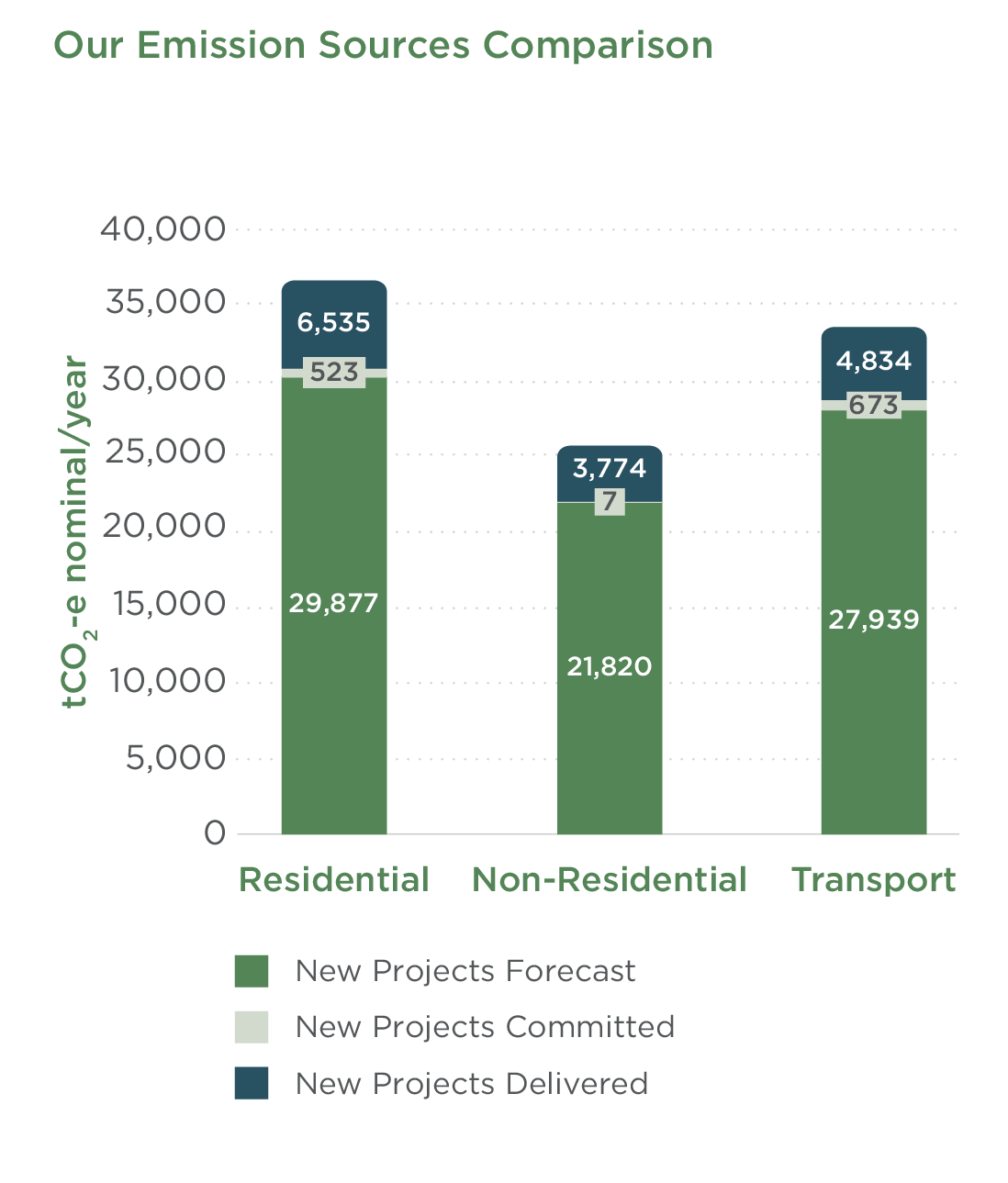
Figure 3. Emissions sources breakdown across current projects.
While our emissions target is designed to address new projects, in FY22 we continued to seek opportunities to make a meaningful impact at projects that have already moved through the planning and design phase.
_________________________
14 Performance is based on projected performance for all new Landcom projects, until such time as the delivery or divestment strategy for each project is confirmed. At this time, results will be reported as ‘committed’, and finally ‘delivered’ when the project is completed or settled.
15 Reduction from the reference case. Landcom chooses to use its PRECINX tool for modelling potable water and Greenhouse Gas emission reductions. 2016 reference case is defined as the normalised relevant metropolitan average applied to a masterplan.
Landcom’s onsite renewable energy target is for 5% of total site demand at the precinct scale to be delivered by onsite renewable energy. This extends beyond the inclusion of solar panels on residential homes and requires a strategic precinct-scale response. The intent of this target is to drive innovation and large-scale integration of renewable energy sources at the project site.
In FY22 Landcom again had three projects in scope for reporting the inclusion of onsite renewable energy. Tallawong South maximised its onsite renewable capability, which while less than the 5% target, was supplemented through the establishment of a green power purchase agreement. This approach is further being taken at Showground and is expected to be reported as delivered in the next year.
Lastly, Epping was sold with the requirement to achieve 5% being a part of legislative approval. While out of scope, Edmondson Park and the SMNW Places precincts of Kellyville, Bella Vista and Norwest have embedded this requirement into the relevant contract conditions of sale. North Wilton, Austral, Macarthur Gardens North and Queenscliff have all designed systems to achieve this target, but as they have not progressed past development application approval, these are out of scope for the reporting period. North Wilton and Austral have demonstrated through modelling that 100% of total site demand can be met by onsite renewables.
Environmental Management
Targets
Performance
All projects will adopt the use industry recognised rating tools at a masterplan and built form scale, achieving not less than ‘Australian Best Practice’ equivalent (Green Star preferred)
Performance
FY21
Performance
FY22
Performance
5 Year
Performance
7 projects have been awarded a rating, registered for a rating or included the award of a future rating within the contract of sale
Targets
NABERS: Office, Hotel & Retail – Commitment Agreement or designed to 5 Star Energy and Water
Performance
FY21
Performance
FY22
Performance
5 Year
Performance
Targets
BASIX energy:
Detached & Semi - 60;
Low-Rise - 55;
Mid-Rise - 45;
High-Rise – 40
BASIX water:
all dwellings - 60
Performance
FY21
Performance
FY22
Performance
Low-rise
Mid-rise
High-rise
BASIX water
5 Year
Performance
_________________________
16 Averages are based on the years when there were projects in scope for the target.
17 BASIX targets are calculated based on the number of dwellings delivered each year against their respective BASIX rating. Overall performance can be compared, but is highly dependent on the number and type of dwellings delivered, which changes year on year, making the calculation of a five-year average difficult.
Performance Overviews
Green Star, administered by the Green Building Council of Australia, is Landcom’s preferred independent and voluntary rating tool for precincts and built form. Landcom is committed to achieving ‘Australian Best Practice, 5 Star Green Star’ project certifications for all new projects18.
In FY22 Macarthur Gardens North achieved a 5 Star Communities rating, while our SMNW Places Precinct at Tallawong South, considered in scope, but delivered through a condition of sale, also achieved a 5 Star Communities rating.
The SMNW Places Precincts at Kellyville and Bella Vista have been registered for Communities ratings and are forecast to each achieve a 5 Star Communities rating, while Norwest has included a 5 Star rating as a contract condition of sales. Furthermore, in FY22 we registered North Wilton for a Communities rating, targeting a 6 Star rating.
Austral, Queenscliff and Schofields were in scope this year, but did not pursue a Green Star rating as their scale, typology and purpose did not align with the Green Star pathway. In particular, Austral focused on delivering an allresidential innovative urban design in a suburban greenfield area of Western Sydney, while Queenscliff aims to deliver an entirely social and affordable housing project in partnership with a Community Housing Provider. Schofields is demonstrating the need for more liveable green streets that address the climate effects of urban heat island through purposely designed residential lots and streetscape.
While not pursuing a Green Star rating, each of these three communities is demonstrating leadership in resilience, affordability and sustainability. Edmondson Park was also in scope for a Green Star rating in FY21, but decided not to pursue a Green Star rating in FY22. Divestments as part of this project have however successfully included ambitious sustainability targets.
_________________________
18 Landcom’s preferred tool is Communities. In some instances, Landcom may seek to use, or require the use of, the Green Star Design & As-Built rating tool.
Landcom adopts the National Australian Built Environment Rating System (NABERS)19 as its preferred independent and voluntary rating system to validate the operational sustainability of eligible non-residential built form. NABERS measures a building’s operational energy efficiency, carbon emissions, water consumption and waste production on an annual basis, and awards a star rating out of six.
Landcom is committed to requiring a NABERS rating at new projects that include office, retail or hotel built form. A NABERS rating can only be ensured at Landcom projects through collaboration with future building owners and operators through conditional requirements within contracts of sale to future site owners.
Landcom had five projects in scope within the reporting period. This included the SMNW Places Precincts of Tallawong South, Hills Showground, Kellyville, Bella Vista and Norwest. In FY22 Tallawong South (Site 2) has been assessed and is predicted to achieve a 5-Star rating for energy and water, while Hills Showground is yet to be delivered but has committed to 5 Star ratings through sale conditions. Kellyville, Bella Vista and Norwest have all included 5 Star minimum ratings as conditional requirements for contracts of sale.
_________________________
During the reporting period, our legacy project at Claymore, which is being delivered in partnership with Land and Housing Corporation, achieved BASIX Energy ratings of 90, exceeding our targets by 50%. This was achieved largely by the installation of solar photovoltaic systems on homes. Furthermore, Stage 5 at our legacy project at Macarthur Heights is currently tracking with 70% of homeowners taking up our offer for a Sustainability Rebate to achieve BASIX Energy 90 at their home.
The following Figures (Figure 4 and Figure 5) represent the average BASIX Energy and Water scores committed for new projects. This includes projects with exchanged contracts of sale with relevant BASIX provisions, and those in support of Development Application approvals.
For FY22 this includes SMNW Precinct Places of Kellyville and Bella Vista plus Macarthur Gardens North, Queenscliff and Schofields, where we plan to deliver homes with builder partners. Dwellings will be tendered to the market with the requirement for builder partners to meet Landcom’s BASIX targets. We expect to see these commitments transfer to delivered results in the coming reporting years.
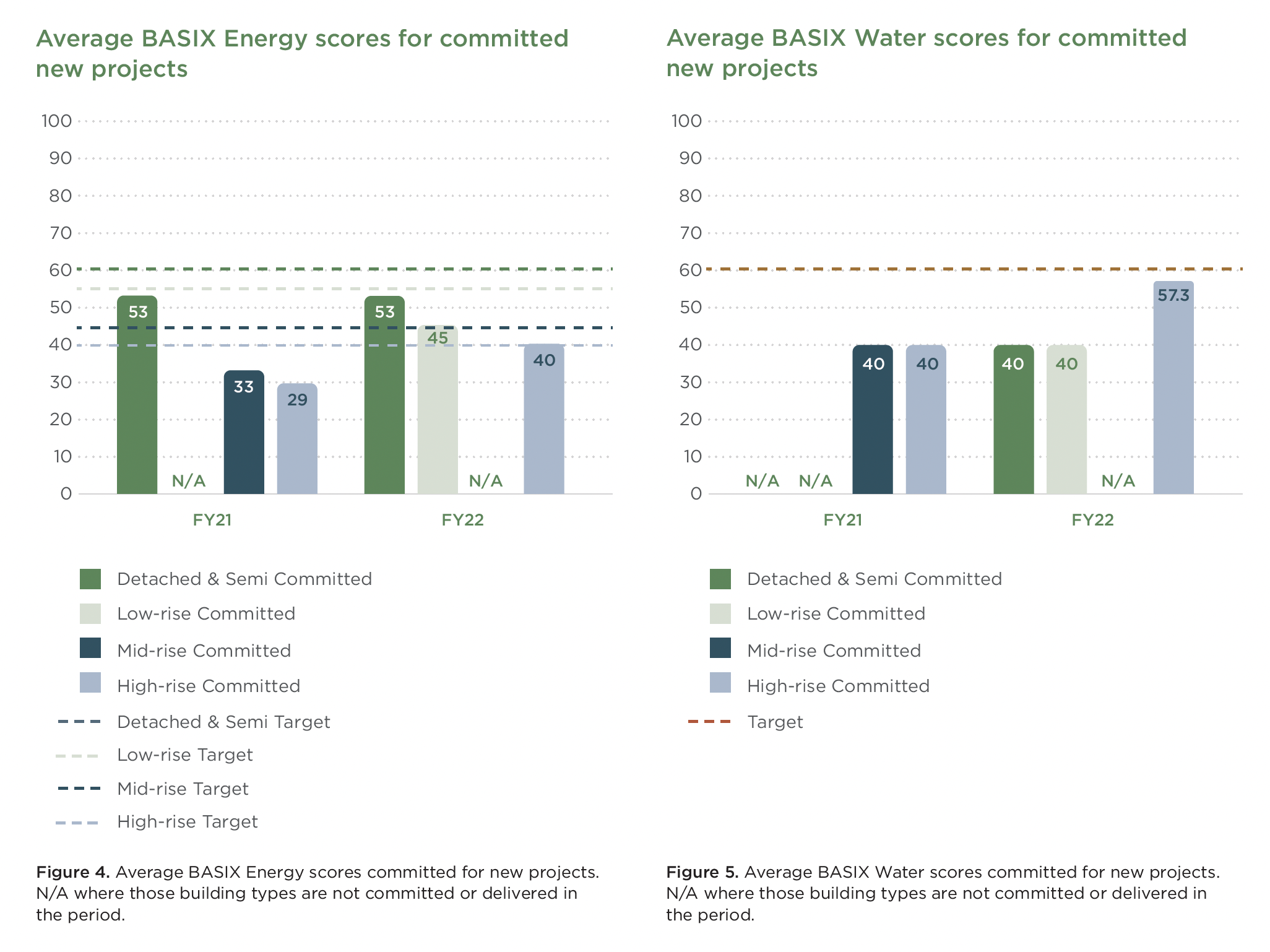
During the reporting period we had a number of projects either undergoing planning assessment or with Expressions of Interest for sale out to market. These projects included stages within Edmondson Park, Austral and North Wilton all of which exceeded our BASIX targets for Detached and Semi-detached products with an average of BASIX 99. For these projects we present our forecast results against our BASIX targets. We anticipate continued improved results to come from increased solar photovoltaic uptake in our communities and our commitment to deliver all-electric for energy as well as increased connections to recycled water schemes to improve our water results.
Landcom further anticipates that demonstration of beyond BASIX compliance will provide market confidence that Landcom’s targets are achievable and contribute value to developers of high density residential projects.

Waste & Materials
Targets
Performance
All new projects divert minimum 95% construction waste from landfill (excluding contamination or hazardous materials)
Performance
FY21
Performance
FY22
Performance
No eligible projects across Landcom delivered works
5 Year
Performance
Targets
100% timber sourced for construction (by cost) is Forest Stewardship Council Certified or agreed equivalent (i.e. Australian Forestry Standards)
Performance
FY21
Performance
FY22
Performance
No eligible projects across Landcom delivered works
5 Year
Performance
_________________________
20 We have reported against this target in different ways over the last four years including legacy projects, works sold to the private sector and those that Landcom delivered. This makes providing a five-year average challenging. We continue to perform well against our target, however, particularly with those sold to the private sector.
21 Averages are based on the years when there were projects in scope.
Performance Overviews
Landcom continues to place a high value on transparently reporting our impact on local environments. We are advancing our approach to focus on how we can achieve net positive environmental outcomes, including zero waste communities.
In calculating our waste diversion from landfill target we exclude hazardous waste and contamination volumes from the figures to align more closely with the standards set out in the Green Star rating tools.
In FY22 there were no new projects in scope for reporting against our waste diversion target. We also did not have any legacy project contracts that generated material volumes of waste. This is due to the new contracts that have started in the reporting period not yet being completed. Hills Showground (Doran Drive)22, Edmondson Park – Precinct 9, Epping and Tallawong South (Site 2) were all sold to private developers over FY20 and FY21 with conditions of sale or legislative requirements to deliver on this target. We require our contractors to provide their waste report upon completion of works, and will report the waste diverted from landfill during the reporting cycle in which the contracted works conclude.
Consistent and accurate waste reporting remains a challenge across the development industry. Throughout the reporting period we developed and tested an online data collection process for waste to mitigate the need for manual ‘paper-based’ workflows. Pilot testing was undertaken in FY22 and we anticipate that most of our contractors will begin to use this process in FY23.
_________________________
22 Separate to the Doran Drive site sold to the private sector in FY20.
For FY22 Landcom had zero project sites in scope for reporting against our target for 100% Chain-of-Custody Certified timber as, like waste, we report against this target upon completion of site works. We continue to require conditions of sale for our divestments and require contractors where Landcom manages contracts to deliver on this target.
Landcom is committed to helping to reduce food waste in our communities. Recycling food waste into free compost and fertiliser at home contributes towards our leadership goal to enable zero waste communities by 2028.
In FY21, in partnership with with Campbelltown City Council and Wingecarribee Shire Council, we were able to offer residents composting supplies to the value of $150 and $80 per household at Macarthur Heights and Renwick respectively via Compost Revolution. This demonstrates how we can enable residents to divert waste from landfill.
The table below highlights the scale of roll-out, waste diverted from landfill and amount of associated carbon dioxide equivalent saved, as well as the money saved from avoided landfill costs. All calculations are based on independent bin audits before and after the compost revolution pilot program over FY21 and FY22 and Compost Revolution’s yearly participant survey.

Water
Targets
Performance
Water Sensitive Urban Design strategy for all projects, pollutant discharge loads not to exceed Nitrogen 45, Phosphorus 65, Suspended Solids 85, Gross Pollutants 90
Performance
FY21
Performance
FY22
Performance
5 Year
Performance
Targets
All new projects modelled to reduce mains potable water demand by 50% at the precinct scale, against a 2016 reference case (CCAP Precinx)
Performance
Delivered:
FY21
Performance
FY22
Performance
5 Year
Performance
Performance
Committed:
FY21
Performance
FY22
Performance
5 Year
Performance
Forecast: Weighted portfolio reduction (%)23
_________________________
23 Averages are based on years when results were available.
Performance Overviews
Landcom views water sensitive urban design (WSUD) as integral to the sustainable water cycle management of our projects. WSUD can include the rehabilitation and protection of natural waterways, design elements such as wetlands, rain gardens, water harvesting and storage and efficient fittings, and alternative water sources such as recycled or blackwater.
In FY22 Austral, North Wilton, Queenscliff and SMNW Places precinct Norwest were in scope for reporting against our WSUD target. These projects, as well as our existing projects, continue to either achieve or exceed Landcom’s WSUD targets.
Our potable water reduction target seeks to reduce the unnecessary use of potable water and improve the efficiency of potable water that is used. The potable water consumption reported is the predicted operational consumption of a community at completion and is calculated using the sustainability modelling tool PRECINX.
During the reporting period the SMNW Places precincts of Tallawong South (Site 2) and Showground (Doran Drive) delivered a final potable water reduction of 37% and 40%, respectively. In addition, stages at Edmondson Park Precinct 9 and Epping were also delivered, achieving 31% and 49% potable water reductions. These projects improved upon FY21 delivered results and were achieved using efficient fixtures, fittings and appliances, and rainwater harvesting to irrigate landscaping.
Queenscliff and Schofields are expected to move to construction in the next reporting period and are reported as ‘committed’ in FY22. Our committed results are slightly lower than FY21 due to the reduction in available space for rainwater harvesting and lack of recycled water connections at these two projects.
We also report our forecast for new projects, and individual precincts within ongoing projects currently in the planning and design stages. Forecast results include SMNW Places precincts of Kellyville, Bella Vista and Norwest, along with Macarthur Gardens North, Edmondson Park (Precinct 3 and residual lots not captured within the FY21 land release), Austral and North Wilton. Across Landcom projects residential land uses continue to dominate potable water consumption, which is consistent with our operations predominantly as a residential developer (see Figure 8).
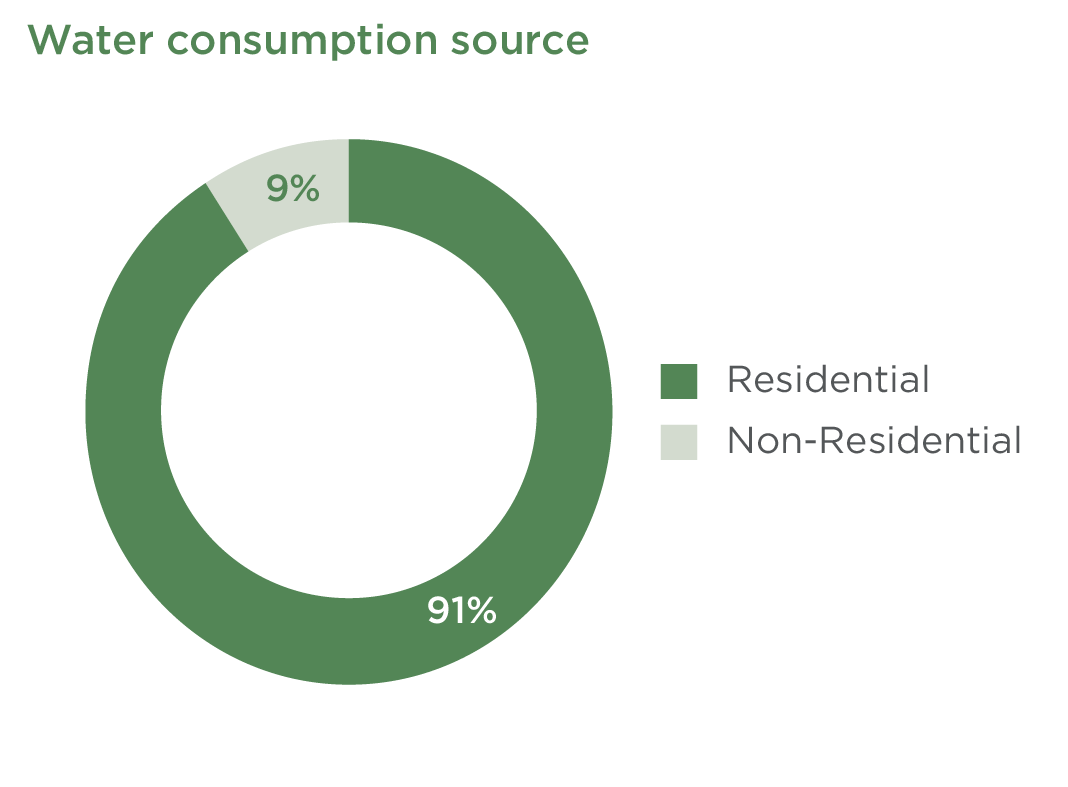
Figure 8. Potable water consumption by source.
The weighted average potable water reduction forecast for new projects is 50%24 (see Figure 9) which is in line with FY21. The residential component of our new project portfolio is forecast to achieve 47% potable water reduction (similar to FY21 forecasts), and non-residential water reductions are forecast to improve at 62% reduction up from 52% in FY21. This change in forecast performance is due to improved fixture and appliance efficiency as well as reflecting new projects connecting to recycled water schemes. We expect this to continue to improve year on year as we move towards our 2028 leadership goal.
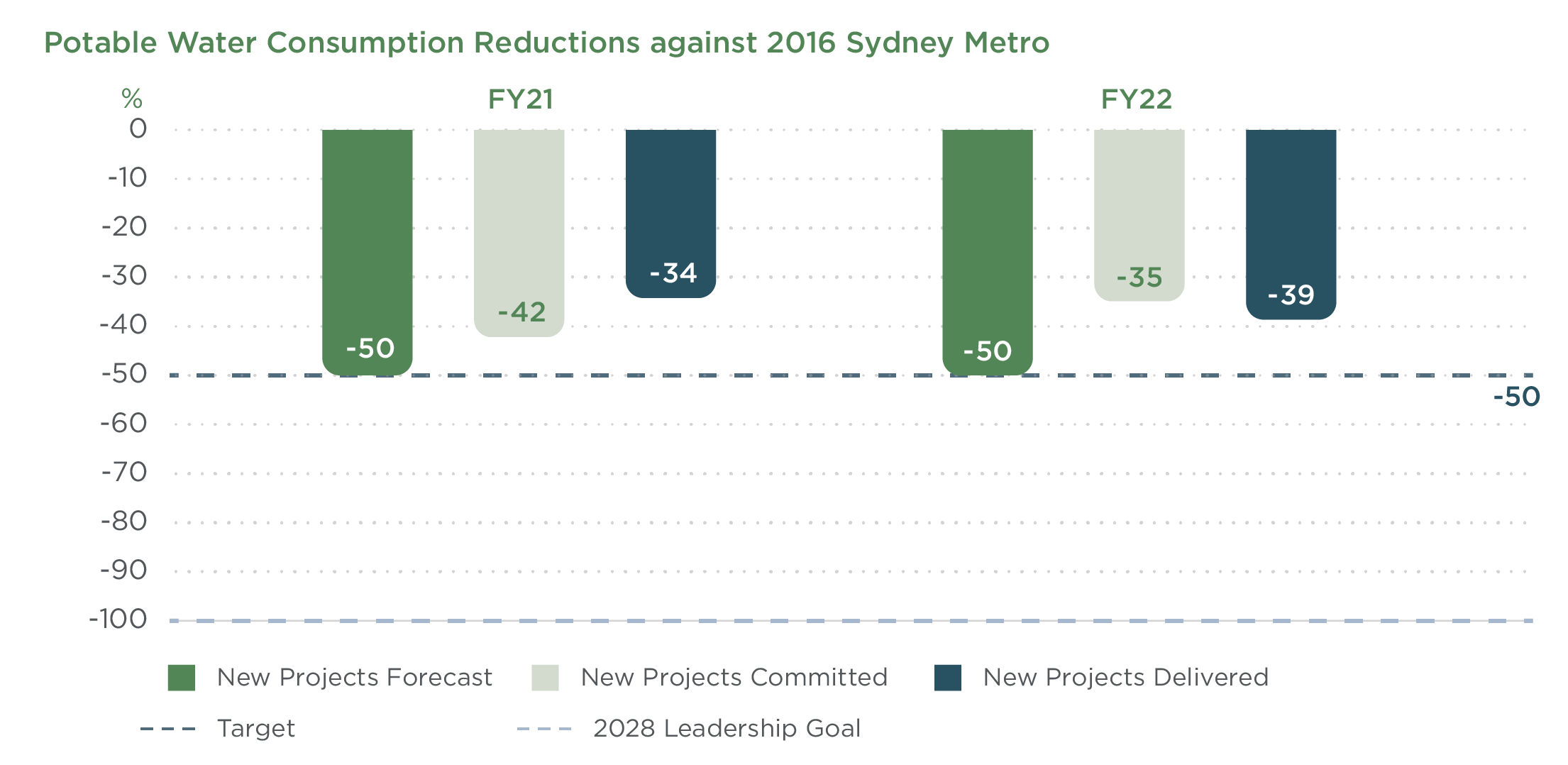
Figure 9. Predicted potable water consumption reductions from in-scope projects, against FY16 baseline, modelled using PRECINX.
New projects without access to recycled water continue to present Landcom with the greatest challenge to meet our targets. Without access to recycled water infrastructure, potable water reductions greater than 50% at the precinct scale become technically challenging, and infrastructure such as private grey and blackwater treatment systems can ultimately have a negative impact on cost of living for our residents.
Despite the challenges this presents there are also opportunities for innovative design, partnership and technology solutions, which we continue to investigate and adopt wherever possible.
_________________________
24 Reduction from the reference case. Landcom chooses to use its PRECINX tool for modelling potable water and Greenhouse Gas emission reductions. The reference case is defined as the normalised relevant 2016 Sydney metropolitan average applied to a masterplan.
Our Sustainable Places Strategy
Our Sustainable Places Strategy with four Leadership Goals guides the way we deliver new communities. Our FY22 performance for each part of our strategy is accessible below.
